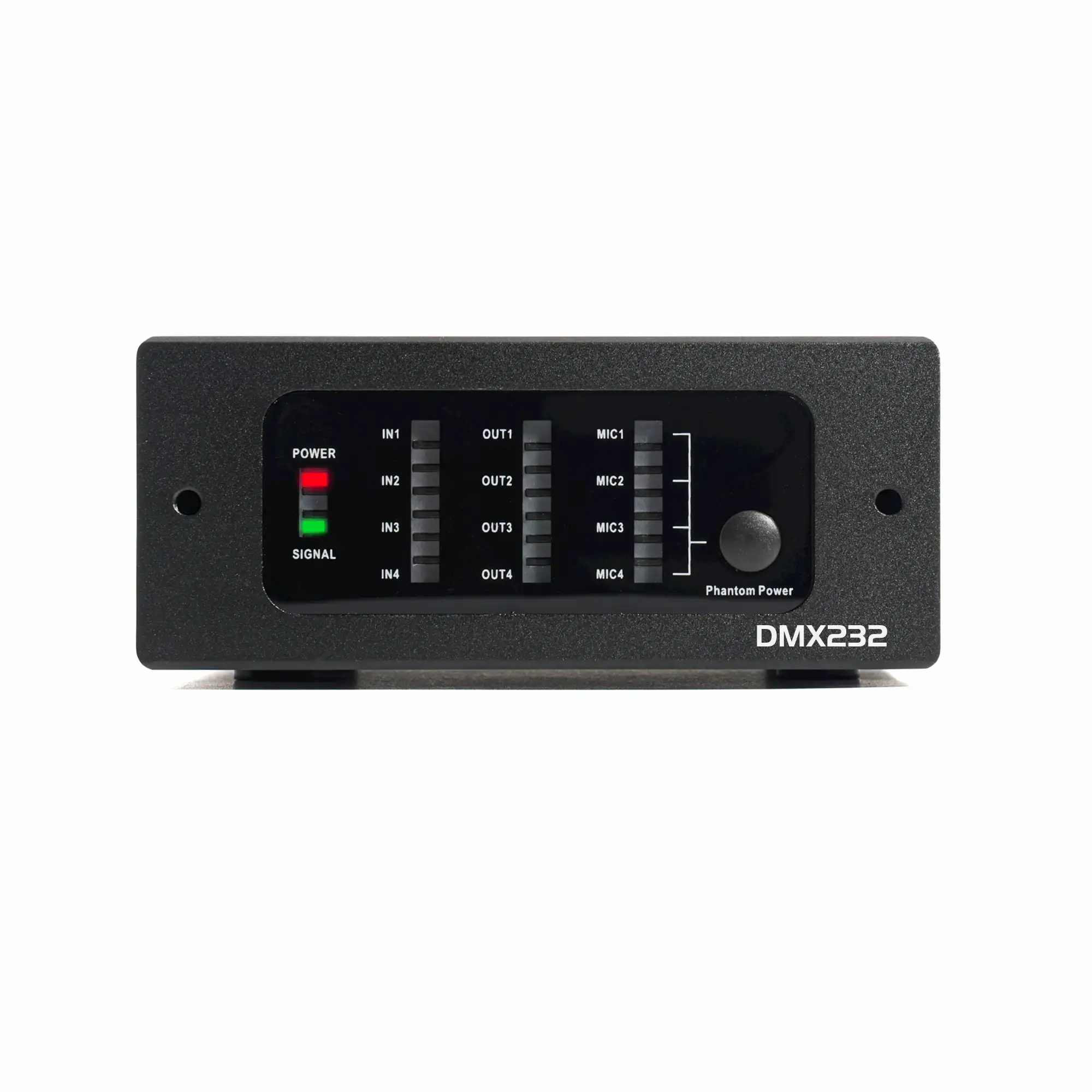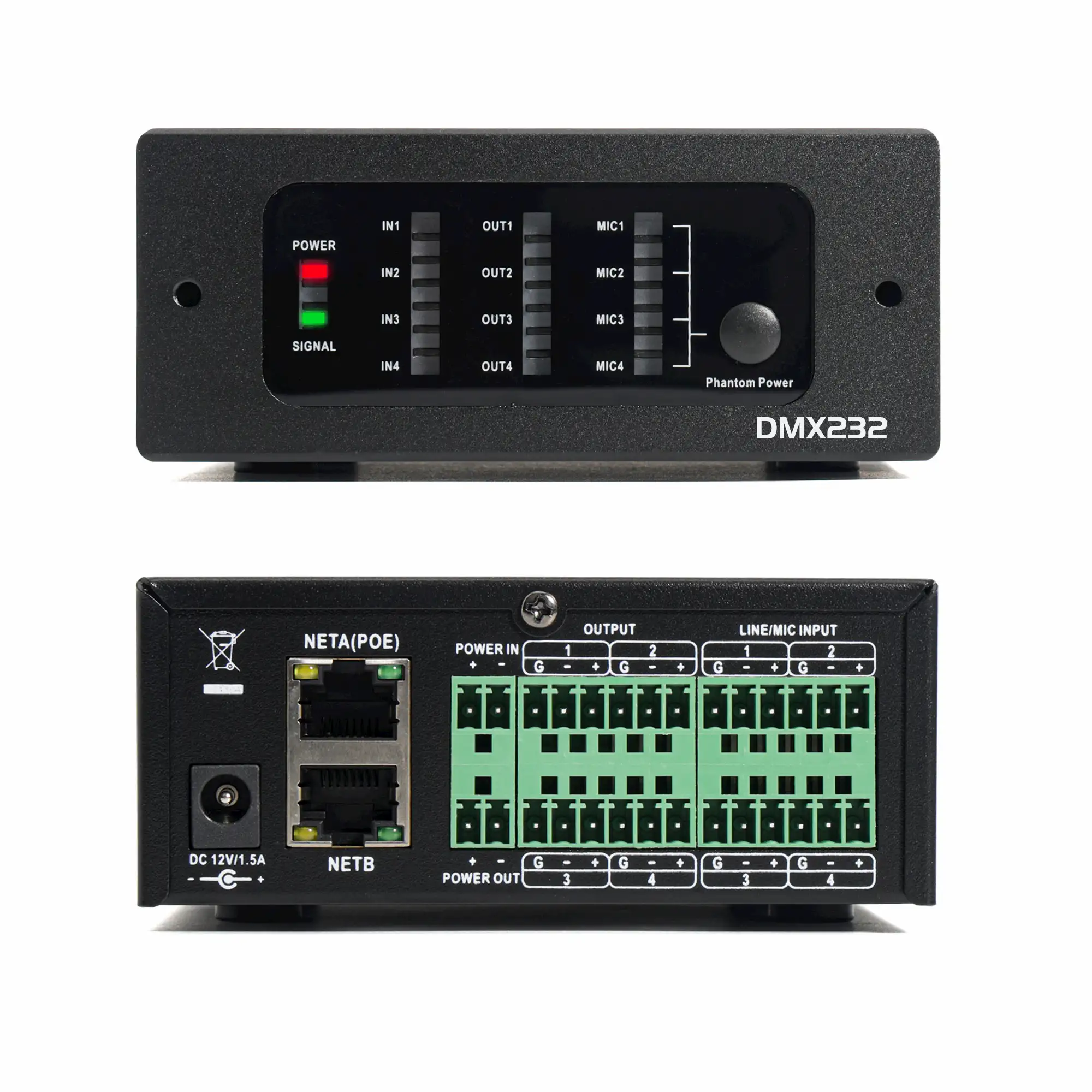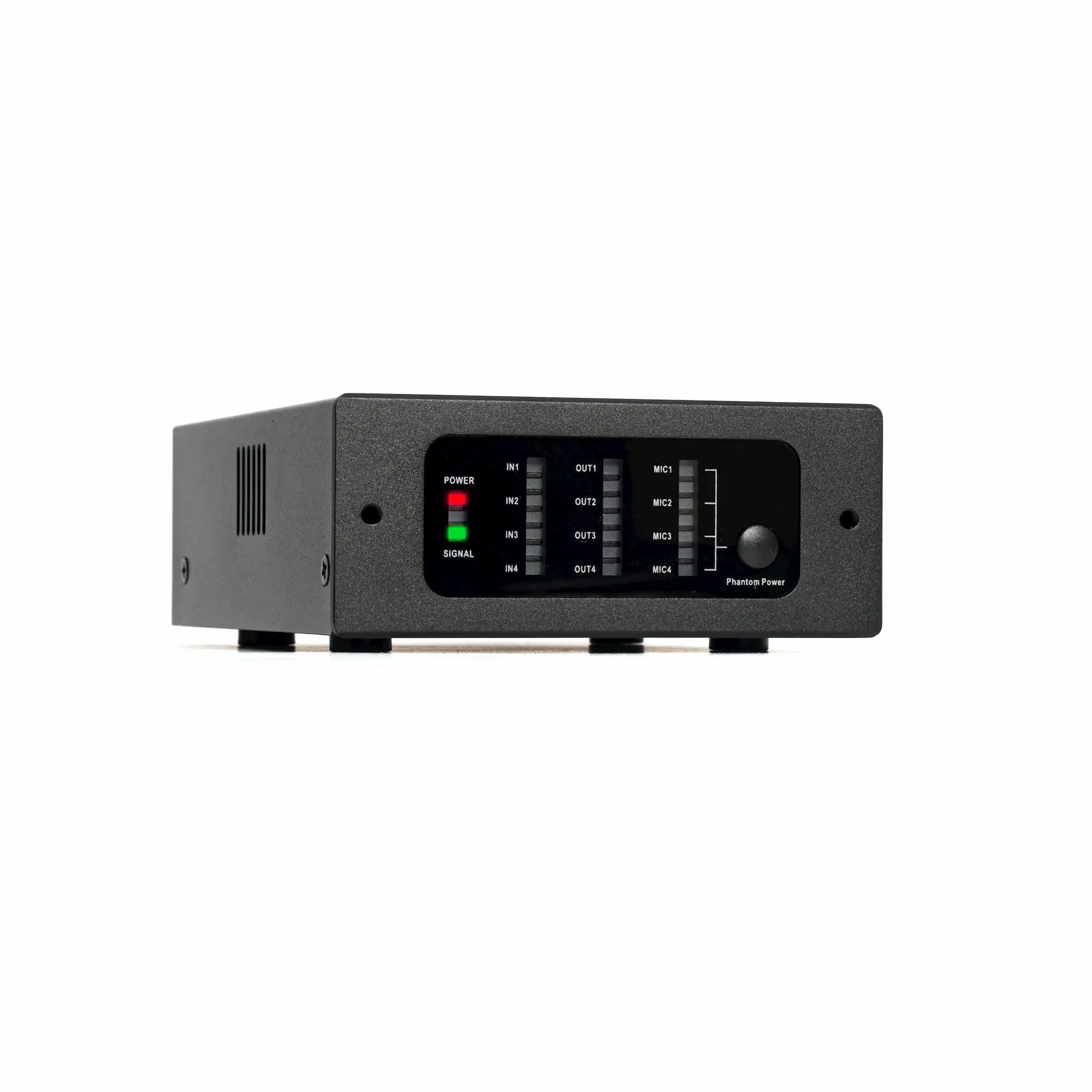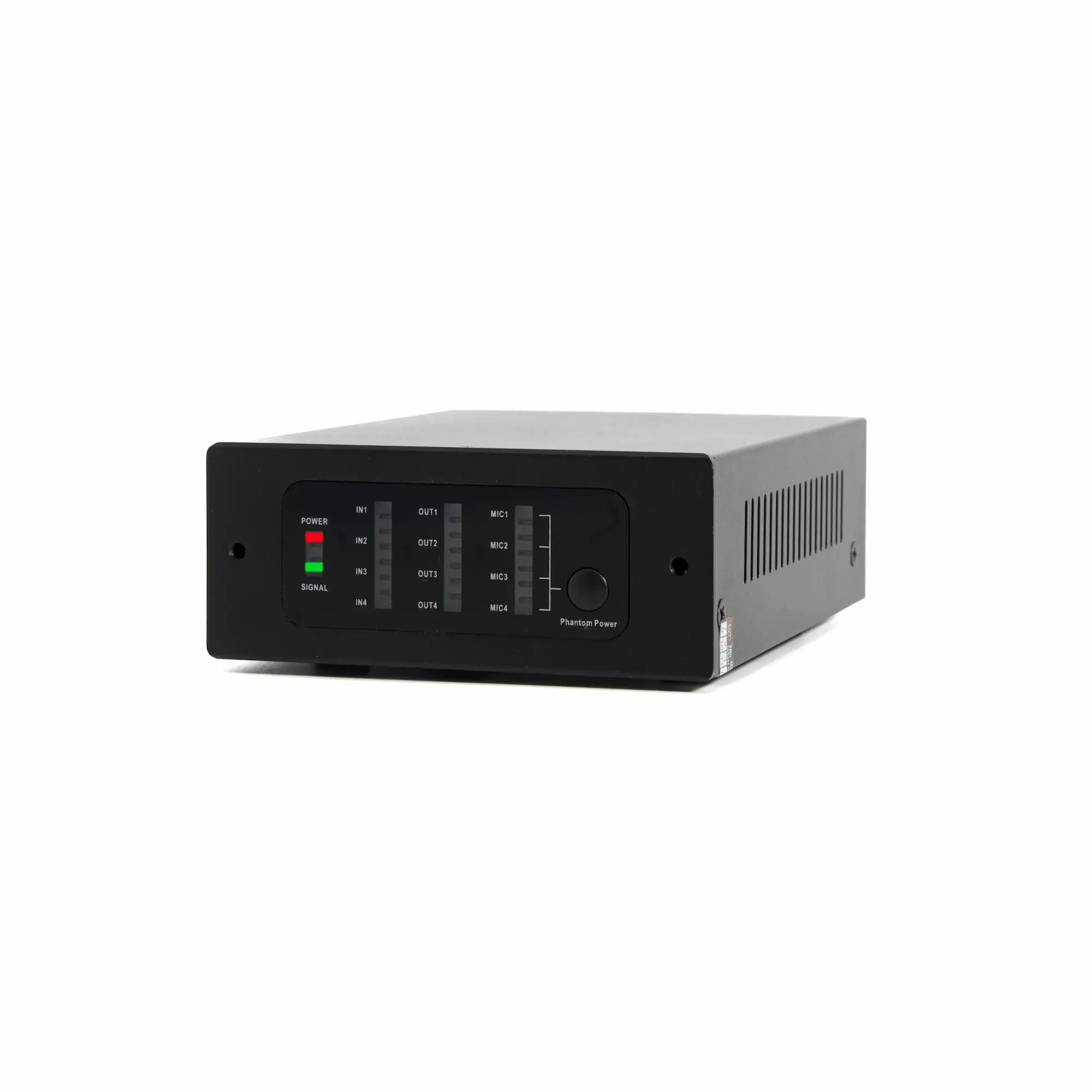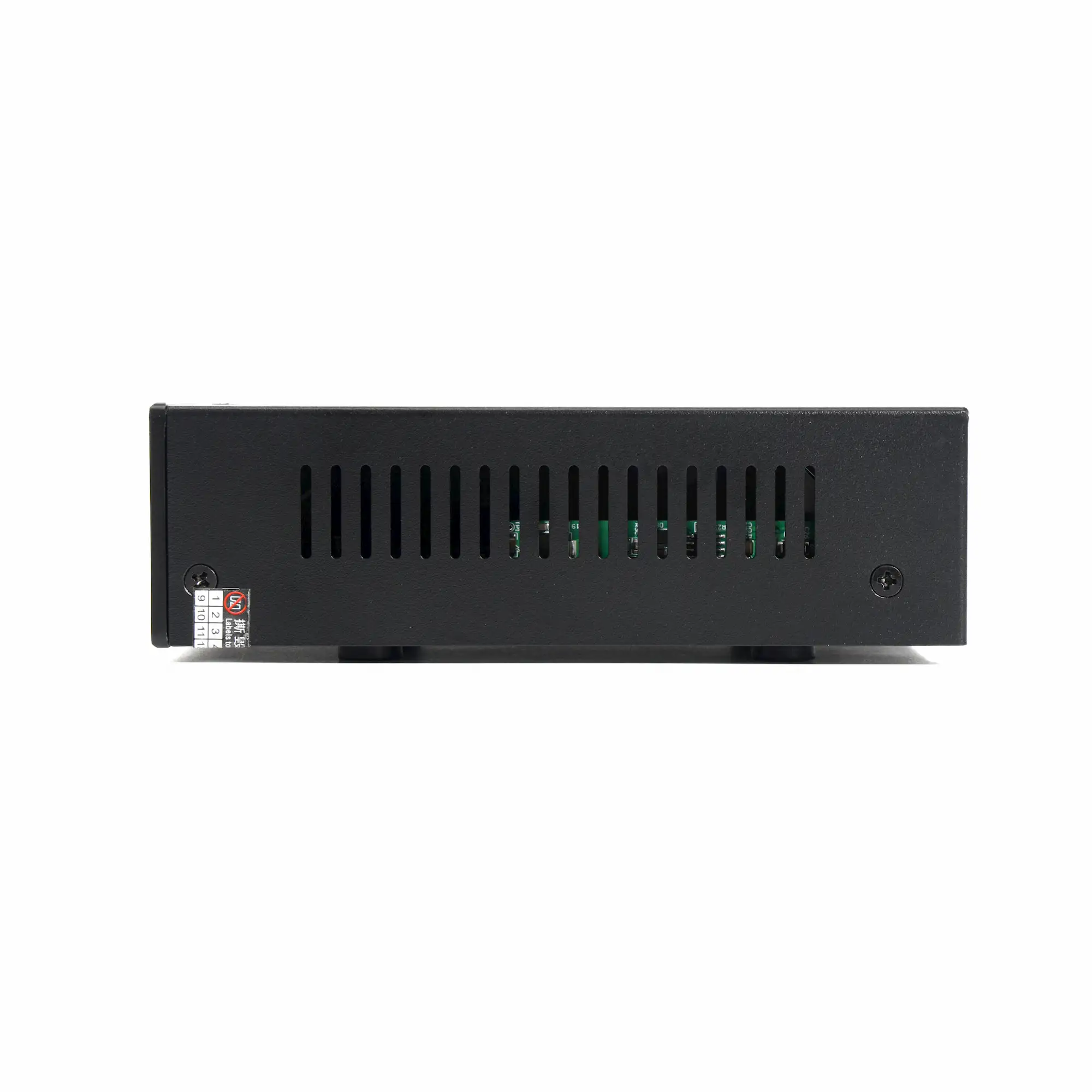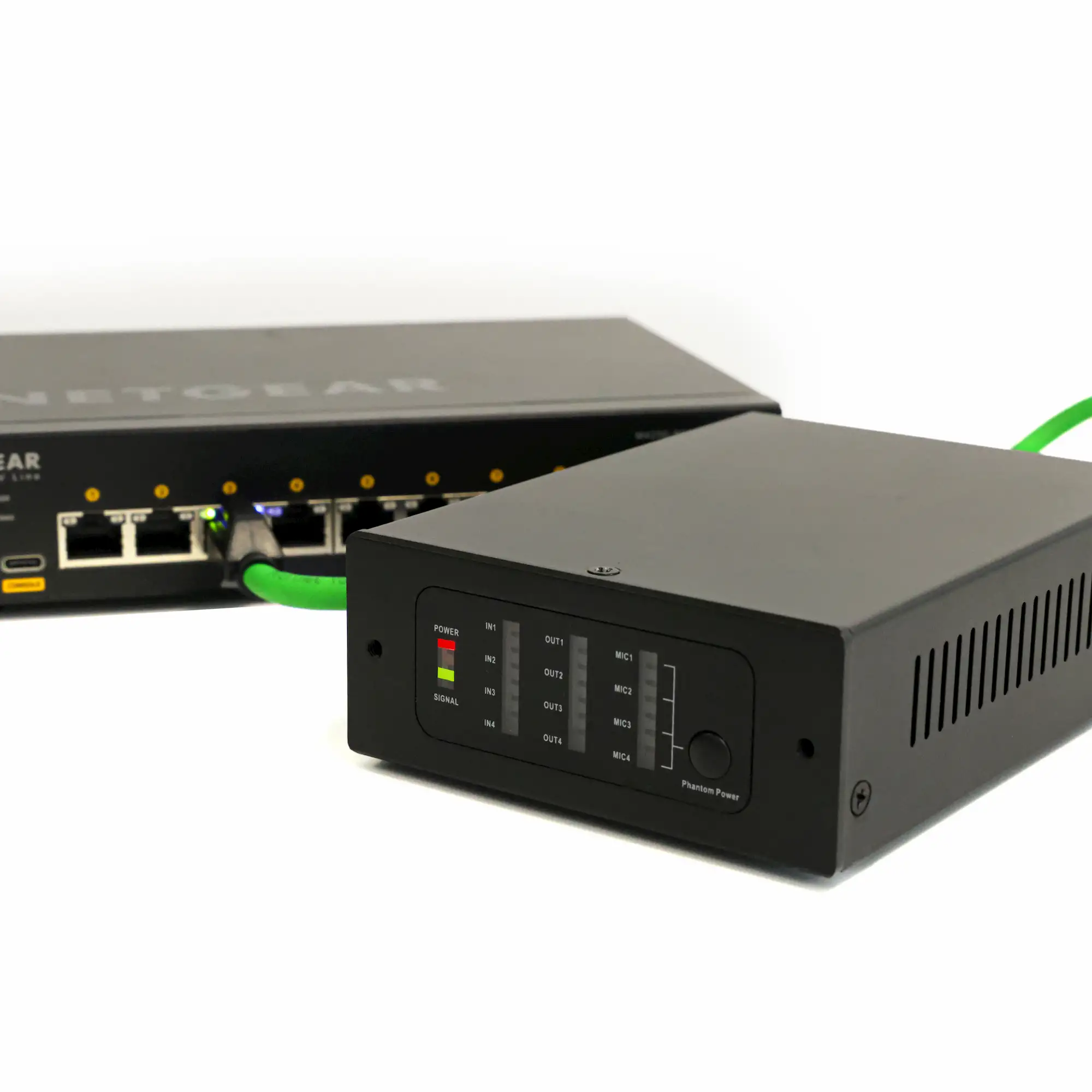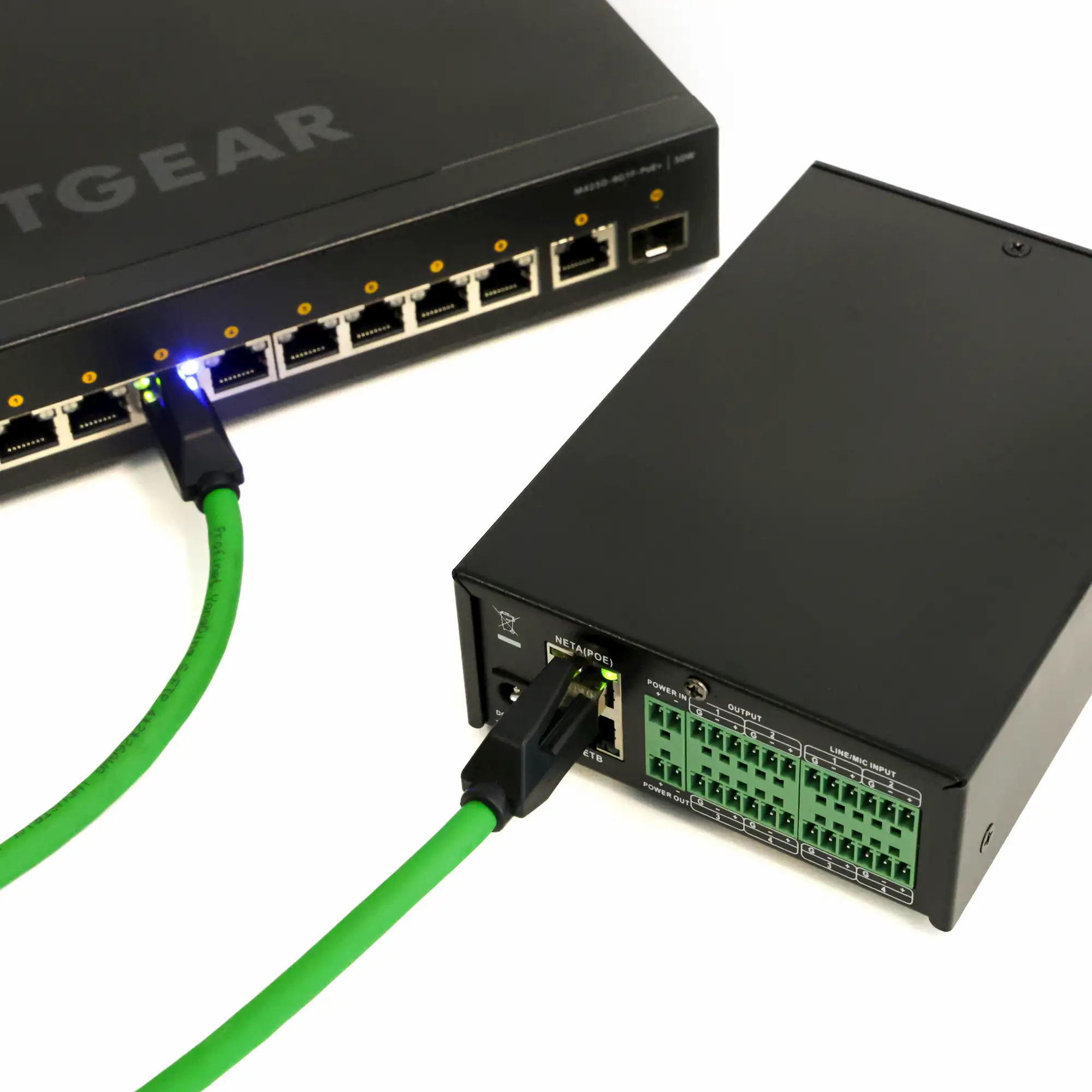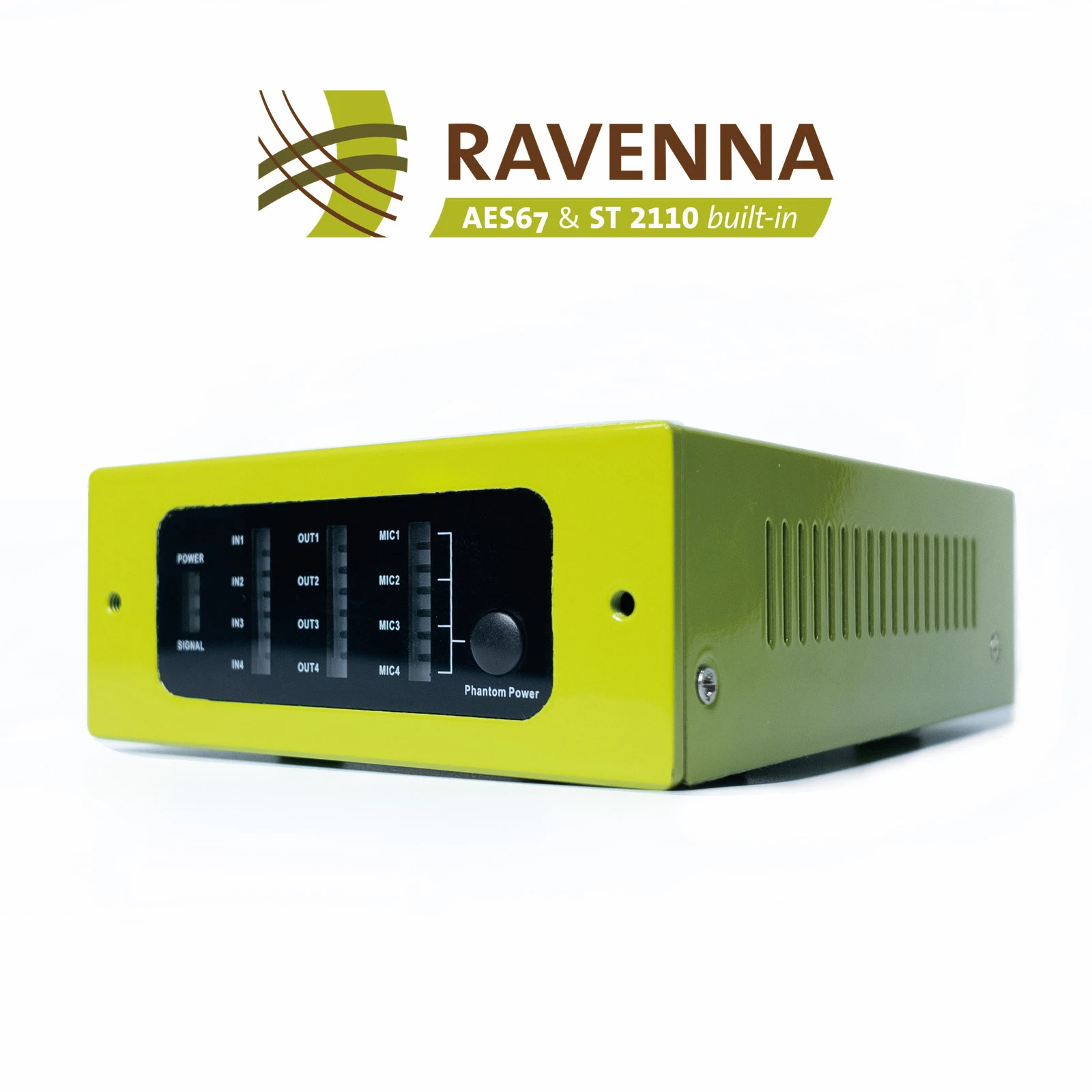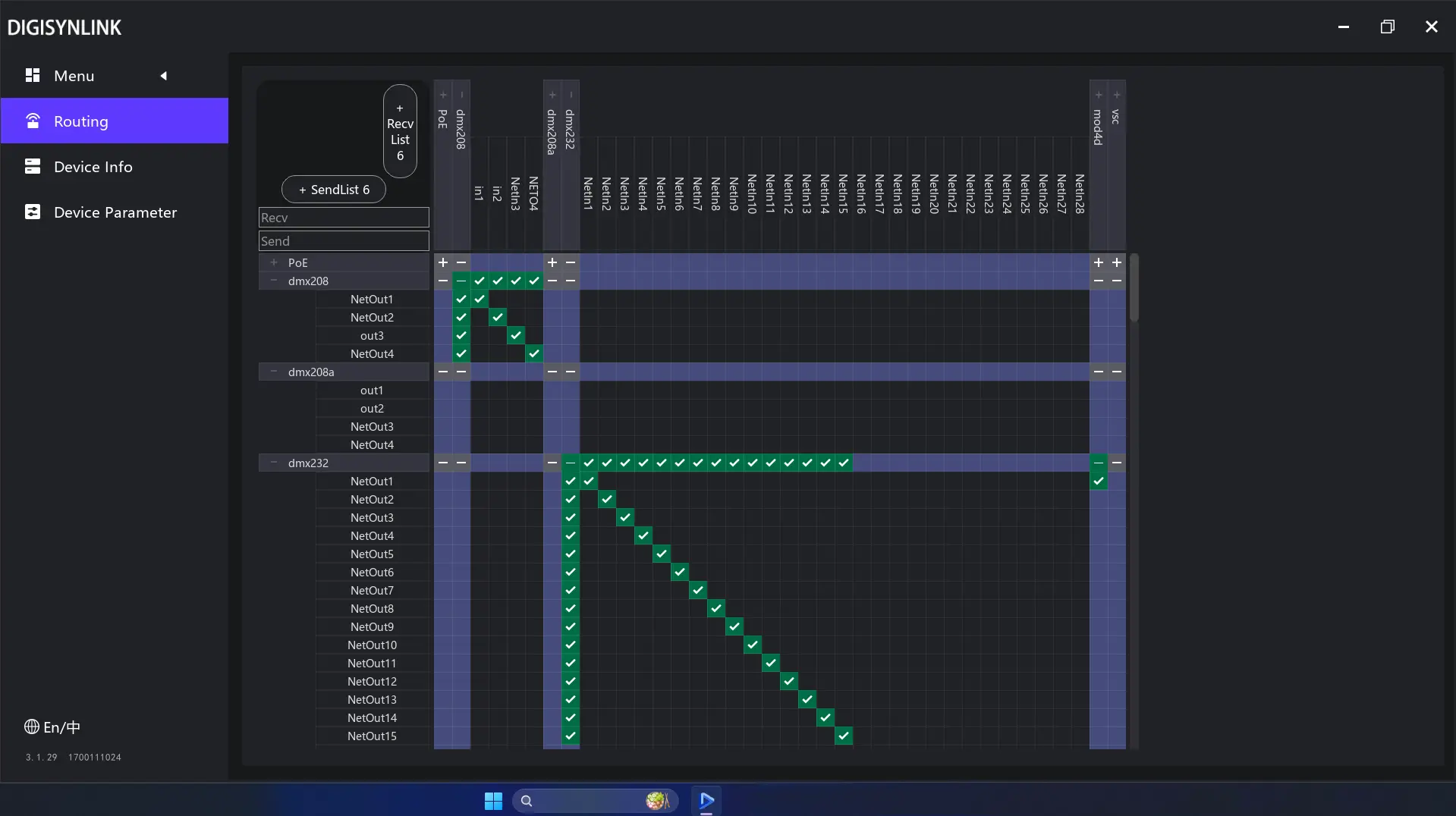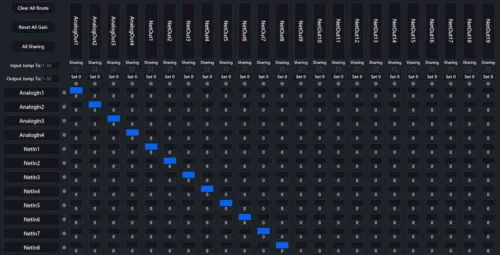DMX232 32×32 Network Matrix Mixer
- DMX232 is a network audio matrix mixier including 28 × 28 networked audio channels (DIGISYN LINK / AES67 / ST2110-30)
- 4 × 4 analog Phoenix terminal, mac input with 48V phantom power
- Up to 32 × 32 auto mixer, supporting gain sharing and gating mixing
- Sampling rates of 48kHz and 96kHz, with bit depths of 16, 24 and 32 bits
- Provides powerful DSP functions with support for OTA upgrades and splicing
- PoE-af standard power supply 15W, also supports 12V DC power input
- 1/4U half-width, includes mounting hardware
- Free DIGISYN LINK3 GUI Controller software for control, monitoring and configuration
- Overview
- Specs
- Downloads

Now supporting SMPTE ST2110-30
Since July 2025, all devices upgraded to firmware version 3.1.4.67 or later have gained support for user-configurable DSCP QoS priorities, PTP domains (Precision Time Protocol Domain), and multicast port numbers. This enhancement ensures the devices fully meet the stringent requirements of broadcasting network environments for advanced Quality of Service (QoS), precise clock synchronization, and flexible multicast management.
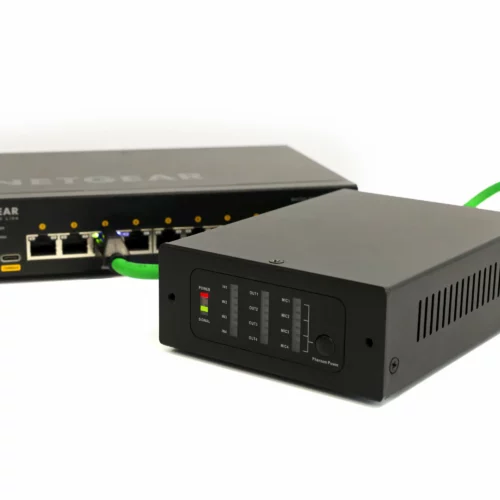
DIGIGYSN LINK-embedded
Equipped with the DL-32 network audio module, it seamlessly supports the AES67 protocol, enabling interoperability with all AES67 network devices. It provides a 28×28 AES67 network channel, offering ultra-low latency, stability, and high-quality audio networking. The DMX232 combines the auto mixier and DSP processor into one unit, reducing system complexity, saving on the number of devices in the network, and budget.
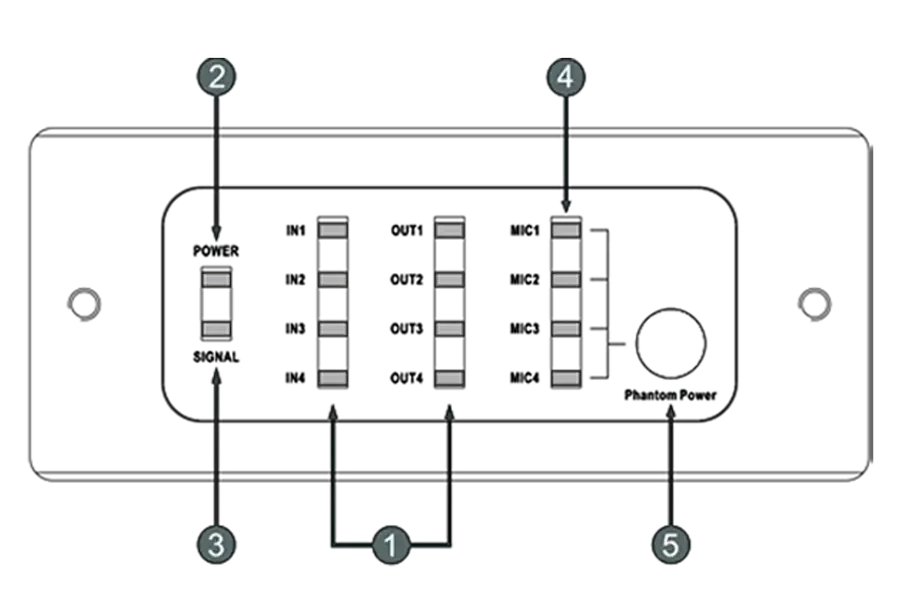
Front panel
- Channel level indicator light
- Power indicator light
- Network communication status light
- Phantom power indicator light
- Phantom switch

Back panel
- DC 12V 1.5A DC power supply
- Gigabit network interface (’A’ supports PoE Power)
- Power Input Interface
- Power Output interface
- Line/Input audio channels (Supports 48V phantom power)
- Output audio channels
DIGISYN LINK3 GUI Controller
Utilize the DIGISYN LINK 3 free control software to achieve a combination of DSP, audio routing, and online monitoring.
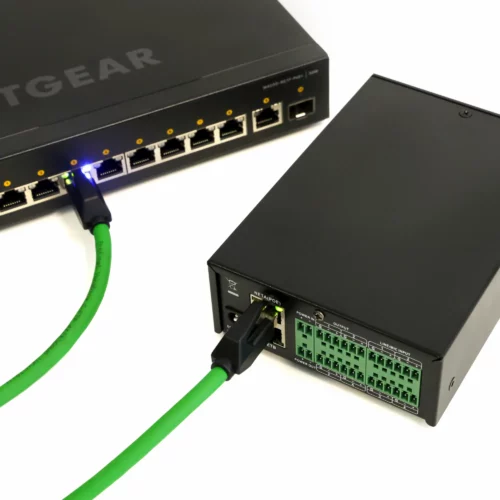
PoE and DC Dual power
DMX232 supports PoE-af standard provides 15W power supply and also DC 12V / 1.5A.
Universal Network Audio Mixer
The DMX232 can receive and process up to 28 multicast streams from diverse audio devices, breaking down compatibility barriers across systems. Equipped with gain sharing Mixing, it intelligently manages microphone channels by attenuating inactive inputs to reduce noise and echo—ideal for conferences and speeches. Its Gating Mixing mode allows users to set level thresholds for each channel, minimizing ambient noise and enhancing dynamics, making it suited for live sound and broadcasting.
Model Comparison DLA-04 DMX208A DMX232 Mixing Matrix 4×4 8×8 32×32 Analog Channels 4×4 4×4 4×4 Network Channels 4×4 4×4 28×28 DSP Processing × √ √ AEC (Echo Cancellation) × √ × AGC (Auto Gain Control) × √ × ANS (Auto Noise Suppression) × √ × AFC (Auto Feedback Suppressor) × √ × Internal Routing Matrix × √ √ 48V Phantom Power Mic Input √ √ √ Auto Mixing × √ √
Comparison of DLA-04, DMX208A, and DMX232
| Audio Capabilities | Value |
| Sampling Rates | 48 / 96 kHz |
| Network audio delay | 1 ~ 6 ms |
| Bit Depth | 16/ 24 / 32 Bit |
| Harmonic distortion + noise | 0.005%@re +4dBu, A weighting, 1kHz |
| Channel isolation | 84DB, A weighting, re+4dBu |
| Frequency response | +0.3DB 20Hz-20kHz |
| Maximum input/output level | 14DBU@1kHz, THD+N<1% |
| Dynamic range | 110DB, A weighting |
| Words put gain | 0 / 15 / 20 / 24DB 4 files |
| Common mode rejection ratio | >50DB @1kHz, re+4dBu |
| The input impedance | Equilibrium 18kΩ, non-equilibrium 9kΩ |
| Output impedance | Equilibrium 300Ω, non-equilibrium 150Ω |
| Hardware | |
| Analog audio channel | 4 IN, 4 OUT |
| Network audio channel | 28 IN, 28 OUT |
| Phantom power supply | 48V, 10MA, Ripple<10MV |
| Power supply | 12V DC, 1.5A / PoE-af(15w) power supply |
| Analog Interfaces | Phoenix Interface |
| Network bandwidth | 100 Mbps |
| Size | 108 x 149 x 45 mm |
| Net weight | 0.7 kg |
For more resources such as firmware, manuals, software and tutorials for this device, please click the hyperlink below.
